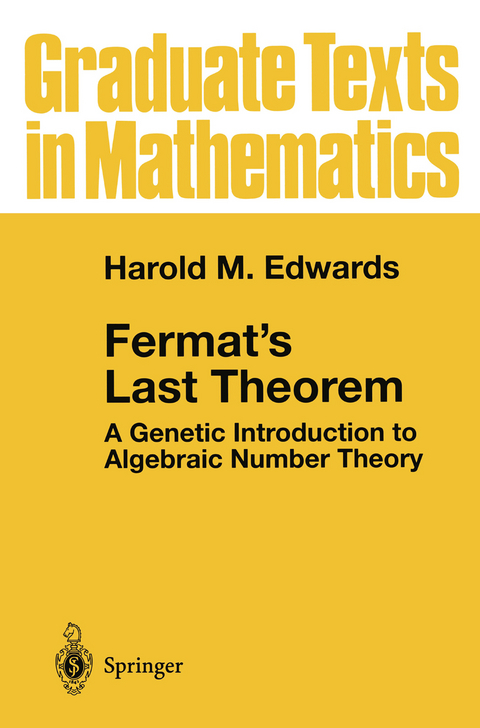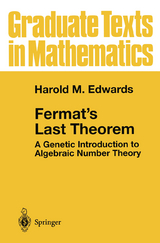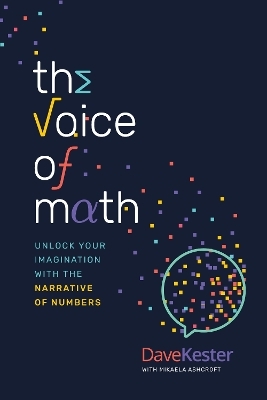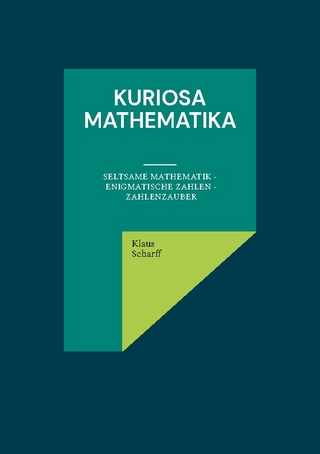Fermat's Last Theorem
A Genetic Introduction to Algebraic Number Theory
Seiten
2000
|
1st ed. 1977. 3rd printing 2000
Springer-Verlag New York Inc.
978-0-387-95002-0 (ISBN)
Springer-Verlag New York Inc.
978-0-387-95002-0 (ISBN)
This book is an introduction to algebraic number theory via the famous problem of "Fermat's Last Theorem." The book also covers in detail the application of Kummer's ideal theory to quadratic integers and relates this theory to Gauss' theory of binary quadratic forms, an interesting and important connection that is not explored in any other book.
This book is an introduction to algebraic number theory via the famous problem of "Fermat's Last Theorem." The exposition follows the historical development of the problem, beginning with the work of Fermat and ending with Kummer's theory of "ideal" factorization, by means of which the theorem is proved for all prime exponents less than 37. The more elementary topics, such as Euler's proof of the impossibilty of x+y=z, are treated in an elementary way, and new concepts and techniques are introduced only after having been motivated by specific problems. The book also covers in detail the application of Kummer's ideal theory to quadratic integers and relates this theory to Gauss' theory of binary quadratic forms, an interesting and important connection that is not explored in any other book.
This book is an introduction to algebraic number theory via the famous problem of "Fermat's Last Theorem." The exposition follows the historical development of the problem, beginning with the work of Fermat and ending with Kummer's theory of "ideal" factorization, by means of which the theorem is proved for all prime exponents less than 37. The more elementary topics, such as Euler's proof of the impossibilty of x+y=z, are treated in an elementary way, and new concepts and techniques are introduced only after having been motivated by specific problems. The book also covers in detail the application of Kummer's ideal theory to quadratic integers and relates this theory to Gauss' theory of binary quadratic forms, an interesting and important connection that is not explored in any other book.
1 Fermat.- 2 Euler.- 3 From Euler to Kummer.- 4 Kummer’s theory of ideal factors.- 5 Fermat’s Last Theorem for regular primes.- 6 Determination of the class number.- 7 Divisor theory for quadratic integers.- 8 Gauss’s theory of binary quadratic forms.- 9 Dirichlet’s class number formula.- Appendix: The natural numbers.- Answers to exercises.
| Reihe/Serie | Graduate Texts in Mathematics ; 50 |
|---|---|
| Zusatzinfo | XV, 407 p. |
| Verlagsort | New York, NY |
| Sprache | englisch |
| Maße | 155 x 235 mm |
| Themenwelt | Mathematik / Informatik ► Mathematik ► Arithmetik / Zahlentheorie |
| Mathematik / Informatik ► Mathematik ► Wahrscheinlichkeit / Kombinatorik | |
| Naturwissenschaften ► Physik / Astronomie | |
| ISBN-10 | 0-387-95002-8 / 0387950028 |
| ISBN-13 | 978-0-387-95002-0 / 9780387950020 |
| Zustand | Neuware |
| Haben Sie eine Frage zum Produkt? |
Mehr entdecken
aus dem Bereich
aus dem Bereich
Sieben ausgewählte Themenstellungen
Buch | Softcover (2024)
De Gruyter Oldenbourg (Verlag)
64,95 €
unlock your imagination with the narrative of numbers
Buch | Softcover (2024)
Advantage Media Group (Verlag)
19,90 €
Seltsame Mathematik - Enigmatische Zahlen - Zahlenzauber
Buch | Softcover (2024)
BoD – Books on Demand (Verlag)
20,00 €




